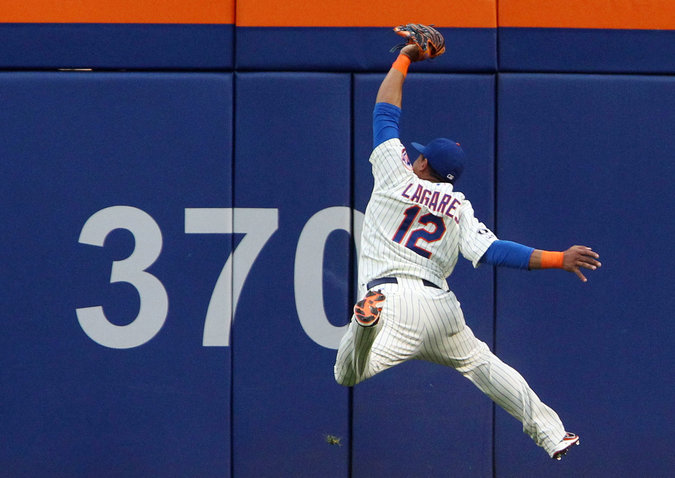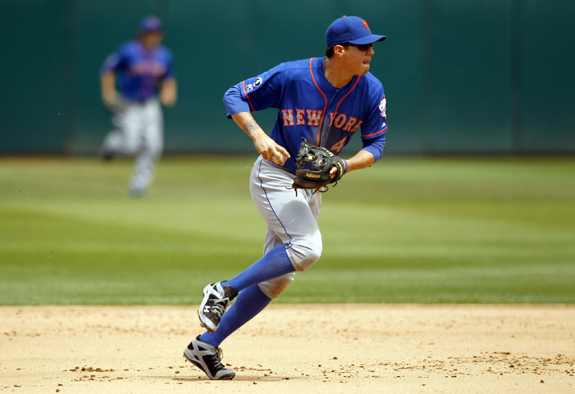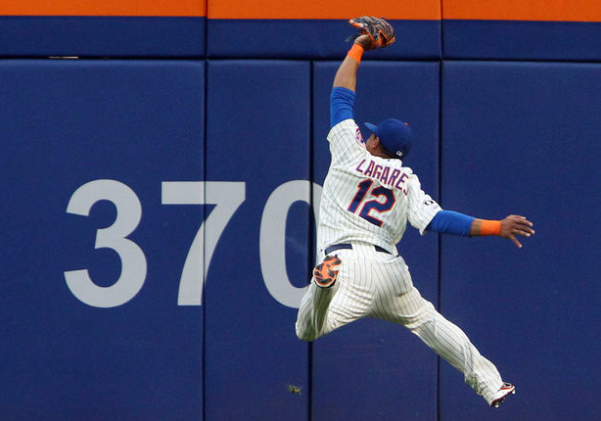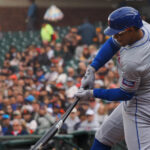Scouts don’t have it easy. They have to sort through thousands of pages of stats and hundreds of prospect profiles every year trying to somehow find the next great talent, picking the ones that maybe have a chance along the road. A road that consists of b-list cities and cut-rate motels.

They look for shortcuts, perhaps rely on radar guns too much, recycle existing scouting reports without the opportunity to make their own revisions because, well, it isn’t always possible to be in Wichita and Fresno at the same time. Sometimes a player gets saddled with a label early in their career that may be less and less accurate as the player develops, and sometimes the label sticks … It’s a daunting task procuring the raw material of major league baseball’s talent pool, but by and large, one of the most difficult things a scout has to do is somehow rate and quantify a player’s defense.
It’s difficult not to look at defense through the lens of previous scouting reports. Even as a fan you hear that an infielder has trouble going to his backhand and you end up overly scrutinizing that very skill. Early write-ups often get picked up and spread around by countless media and the description becomes the player’s calling card whether it continues to fit or not, and the proliferation of cut-and-paste second rate outlets hasn’t helped.
Jacob deGrom for instance was picked in the 9th round, and only a year or so ago was ranked below the likes of both Noah Syndergaard and Rafael Montero. I think it fair to say that is no longer the case. Wilmer Flores is the latest to be pigeon-holed in this manner. The book on Flores was that he couldn’t play shortstop, but outside of the fact that he is unusually slow of foot for a player of his build, there was little else offered in support of this premise. His hands were never the problem, his instincts were adequate, his throwing arm was never really mentioned at all. Most accounts simply dismissed him as incapable of playing shortstop at the major league level and the tale grew in its telling.
Remember as kids when teachers would have us do the experiment where we’d sit in a circle and a message would be passed around and by the time it got to the last person the message would be totally altered and exaggerated? In much the same way it seems one or two initial, and perhaps hasty judgments, were mirrored with a few additional embellishments, until the notion that Flores could play shortstop became a virtual absurdity.

Then we actually got to see Flores play, and what we saw with our own eyes was an infielder without a lot of speed and with (at times) awkward footwork, but his range given his tall lanky frame wan’t that bad, and his arm was very strong and accurate.
His instincts aren’t just ok, they are a strength for a kid of his age and experience. His hands are soft and fluid and he’s got some confidence. Bottom line, he makes the plays and I for one have seen worse. Flores can indeed play major league shortstop.
Baseball America’s Prospect Handbook included this excerpt about Flores in 2012:
“As he fills out his lean frame he could develop 20-homer power, which would be special for a shortstop — but scouts give Flores no chance to stay up the middle. He’s a well below-average runner with heavy feet and substandard range.”
Carson Cistulli added this in a report for Fangraphs, reacting to Baseball America’s analysis: “Not a glowing report, that. And yet, one finds that, in nearly 50 starts at shortstop this year, that Flores has produced commendably average — or at least not disastrously below-average — defensive figures, according both to UZR (+3) and DRS (-2).“
The unfortunate consequence of this propagation of sometimes dated and sometimes less than accurate scouting reports, is that the fans start to take these assessments with a grain of salt. Misinformation weakens the medium until we determine to see for ourselves.
Some sites have recently pioneered stats based on fan perception, particularly in support of defensive metrics which can be flawed and subjective. The idea behind it is that the eyeball test for many is still the best evaluation of a player’s defense. These metrics have proven to be remarkably true indicators, provided enough fan input is garnered. Interestingly enough, Flores’ FSR (Fan Scouting Report) is a -1 overall, which is only slightly below average. I think even Flores’ biggest skeptics have to admit that he is passable as a defender.
Does the eyeball test pass muster? Tom Tango put together a nifty little survey any of us can take, asking only that we be honest and that we evaluate players we are truly familiar with. You can add your input here.
It’s an interesting experiment. Defensive metrics have always been problematic, overly subjective, and difficult to quantify because better defenders naturally take more chances. It stands to reason that fan perception, in this instance, may be at least part of the answer to scouting a player’s defense.
Consider three charts below that look at FSR (fan scouting report), DRS (defensive runs saved) and UZR (ultimate zone rating) … you can see that each line more or less mirrors the others and when you crunch the numbers sure enough UZR correlates positively to FSR at a modest .76 while DRS correlates with FSR at a strong .83.
This makes sense when you think about it as zone rating shouldn’t overlap as evenly with fan ratings (which are the product of a broad set of questions) as defensive runs saved.

All Data Combined

I wouldn’t be surprised to eventually see more fan input used in generating statistics that interpret what are ultimately subjective analyses. No matter how much math you throw at a guy tracking down a fly ball or an infielder going deep in the hole to make a play, there are elements of grace and instinct and intuition that are impossible to quantify.
Our very own Juan Lagares is a virtual personification of this almost magical ability to get to the ball. Interestingly enough Flores’ FSR, while below average, is not abysmal and does reflect an arm with good strength and accuracy. His FSR is also a bit lower than both his UZR and his DRS … His own fans were actually slightly harder on him than those two well established metrics, which in my mind only adds to the measure’s authenticity.
I know a lot of fans out there aren’t keen on sabermetrics and fancy diagrams and using stats to interpret everything from balls in play to downward tilt on a slider, but I think it’s nevertheless exciting to witness the evolution of what has become a spectacular array of analytic options … kind of makes you wish you’d paid more attention in algebra …
*Couple of brief footnotes: The FSR ratings were not complete for the current year so I used the “in progress” ratings which were on a 0 – 100 scale. Secondly I could not include catchers because of UZR … Finally one issue I have with FSR is how some teams garner a lot more input than others, such as the Red Sox with 93 entries and the Mets with 98 … one concern is this may skew the results making them more valid for the teams with more entries.















